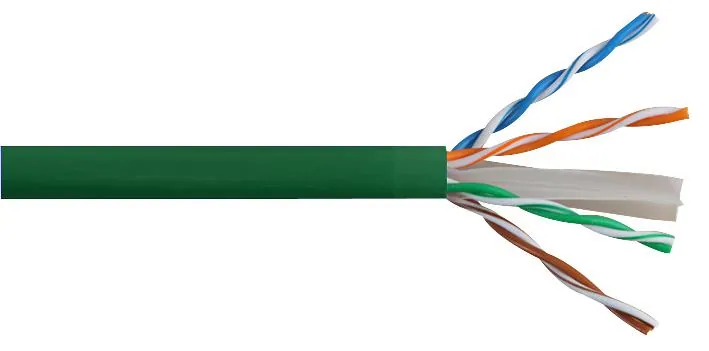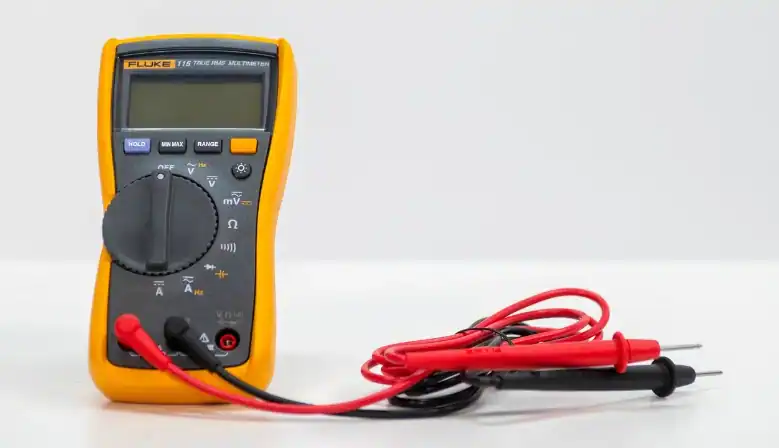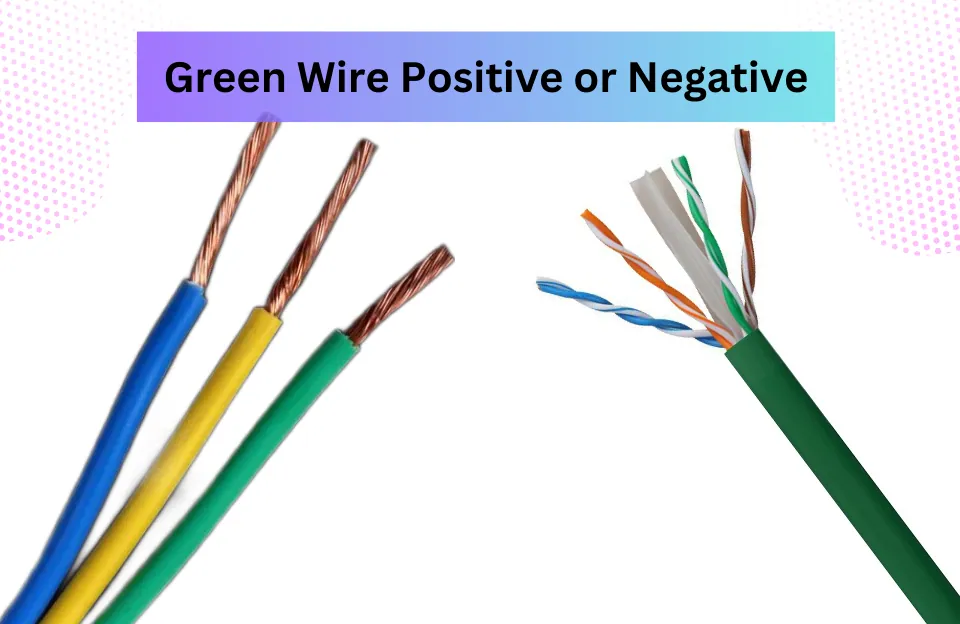In the electrical systems of our home, understanding how wires are connected is crucial for proper functioning and safety, One common query that often arises is determining a green wire’s positive or negative aspects.
Electrical wiring plays a fundamental role in connecting various components of a circuit. Wires transmit electrical signals and power, enabling the functioning of appliances, machinery, and electronic devices. The color coding of wires is an essential aspect of electrical systems, helping to distinguish their purpose and polarity.
This guide will provide insights on identifying a green wire’s positive and negative sides, ensuring accurate connections and optimal electrical performance.
Understanding Electrical Wiring
Before we dive into identifying green wire polarity, let’s have a brief overview of electrical wiring. Electrical wires are used to transmit electrical current within a circuit. A typical electrical wire consists of a conductor, often made of copper or aluminum, surrounded by an insulating material to prevent accidental contact with other conductive surfaces. Depending on the purpose and function, wires are assigned specific colors to distinguish them from one another.

The purpose of wires
Wires serve multiple purposes in electrical systems, such as:
- Transmitting electrical power
- Carrying signals between components
- Establishing connections between devices
The Role of Green Wire
The green wire serves a specific purpose in electrical systems. It is primarily associated with grounding and safety measures in both direct current (DC) and alternating current (AC) systems.
The green wire plays a vital role in electrical circuits by providing a low-resistance path for electric currents to safely dissipate. When a fault occurs, such as a short circuit or an appliance malfunction, excess electricity flows through the green wire and returns to the earth, preventing potential hazards.
Additionally, the green wire helps stabilize voltage levels and reduces the risk of electrical fires.
Differentiating Between Grounding and Neutral Wires
While the green wire is used for grounding, it is essential to differentiate it from the neutral wire. The neutral wire carries the return current from the load back to the source, completing the electrical circuit. It is typically color-coded white or gray and should not be confused with the green wire used for grounding purposes.
Identifying Positive and Negative Wires

Green wires can be found in various electrical applications. Some common examples include electrical outlets, light fixtures, and appliances.
In these cases, the green wire is connected to the grounding terminal or screw, ensuring that any electrical faults are safely diverted to the ground rather than posing a risk to users.
Different Wire Colors
Wire manufacturers follow specific color codes to ensure consistency and easy identification. In most cases, red or black wires are used to represent the positive side, while white or blue wires indicate the negative side. However, when it comes to green wires, their function is primarily related to grounding.
Green Wire
Green wires are commonly used for grounding purposes in electrical systems. Grounding provides a safe path for electrical current to flow into the ground in the event of a fault or surge, preventing electric shocks and protecting devices. However, in some cases, green wires can also carry current and may be used as part of a circuit.
Markings on the Wire
Apart from color, wires may have markings or labels to indicate their function. These markings can vary depending on the wire’s purpose and the specific electrical code followed in your region. Therefore, it’s essential to familiarize yourself with the applicable electrical codes and standards for accurate wire identification.
Tools Needed for Identification

To identify the polarity of a green wire, you’ll need the following tools:
- Multimeter: A device used to measure voltage, current, and resistance.
- Insulated gloves: To protect yourself from electrical shocks.
- Wire strippers: Used to remove the insulation from the wire for testing.
Identifying Green Wire Polarity: Step-by-Step Guide
Precautions
When dealing with electrical wiring, including the green wire, it is essential to follow safety precautions. This step is crucial to prevent any electrical accidents. Here are some tips to keep in mind:
- Always turn off the power supply before working with electrical wiring.
- Wear appropriate personal protective equipment, such as insulated gloves and safety goggles.
- Consult a qualified electrician if you are unsure about any wiring-related tasks.
- Avoid touching exposed wires or connections without proper insulation.
- Regularly inspect and maintain the grounding system in your home or workplace.
Visual Inspection
Begin by visually inspecting the green wire. Look for any markings, labels, or signs of positive or negative indicators. Sometimes, manufacturers use printed text or symbols on the wire’s insulation to indicate polarity.
Testing with a Multimeter
If no visual indicators are present, proceed to use a multimeter for further testing. Set the multimeter to the voltage measurement mode. First, touch the black probe to a known ground, such as a metal conduit or ground wire. Then, touch the red probe to the green wire. If the multimeter shows a positive voltage reading, it indicates that the green wire is positive. If the reading is negative or shows no voltage, the wire is negative or used for grounding.
Consulting the Manufacturer’s Documentation
In some cases, the manufacturer’s documentation or user manual for the specific device or equipment connected to the green wire may provide information on its polarity. Refer to the documentation for clarification.
Recommended:
- Guide For Speaker Wire Colors Code: Explanation & Examples
- Projector Ports: What Are The Ports Available In A Projector?
- How to Connect Android Phone to Projector via USB Cable?
- 4K 30hz Vs 60hz: Which HDMI Should I Pick?
- How To Connect Nintendo Switch To Projector
Green Wire Positive or Negative: FAQs

Is it safe to touch a green wire?
While touching a green wire in normal conditions is generally safe, it is important to remember that green wires are often used for grounding purposes. If there is a fault in the system or an electrical surge, touching a green wire can be hazardous. Always exercise caution and wear appropriate protective gear when working with electrical systems.
Can I connect a green wire to a black wire?
No, a green wire should never be connected to a black wire. Black wires are typically used for carrying live or hot electrical current, while green wires are exclusively used for grounding. Mixing these wires can lead to dangerous situations and electrical malfunctions.
Are green wires used in low-voltage systems?
Yes, green wires can be used in low-voltage systems. However, it is important to adhere to the specific electrical codes and regulations governing low-voltage installations in your region.
Are there any specific regulations regarding green wires?
Yes, electrical codes and regulations vary by region and may specify the proper use and installation of green wires. It is essential to consult the relevant local codes and guidelines when working with electrical systems.
Can a green wire be used for something other than grounding?
No, green wires are specifically designated for grounding purposes and should not be used for any other function.
Are green wires always present in electrical systems?
Green wires are commonly found in modern electrical systems as a grounding conductor. However, the presence of green wires may vary depending on the electrical codes and regulations of different regions.
Can I use a green wire as a neutral wire?
No, green wires should never be used as a neutral wire. Neutral wires are typically color-coded white or gray.
The Bottom Line
Wire color coding is an essential aspect of electrical systems as it helps identify the function and characteristics of different wires. The standardized color coding scheme ensures consistency across various installations, making it easier for electricians and technicians to work with electrical systems.
In Summary, determining the polarity of green wires can be challenging due to their primary association with grounding. However, by following the steps outlined in this guide, you can accurately identify whether a green wire is positive or negative, ensuring safe and efficient electrical connections.
As an experienced Software Engineer in a Projection-Based Technology Company, I love sharing my Knowledge to utilize and help others to learn more about Projectors. Thus one can get the right Projector for their needs.



